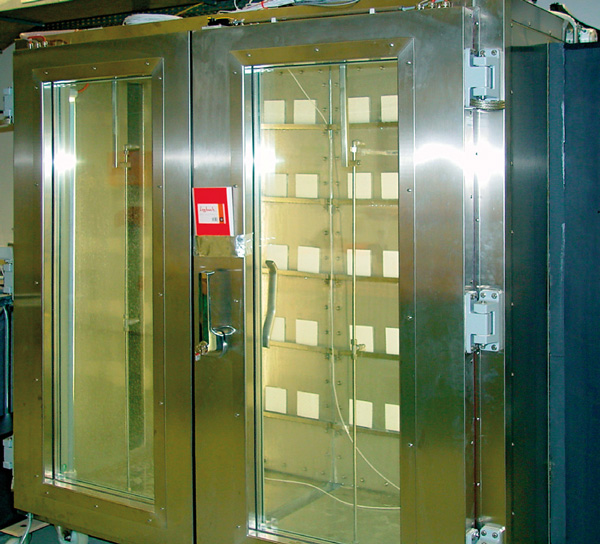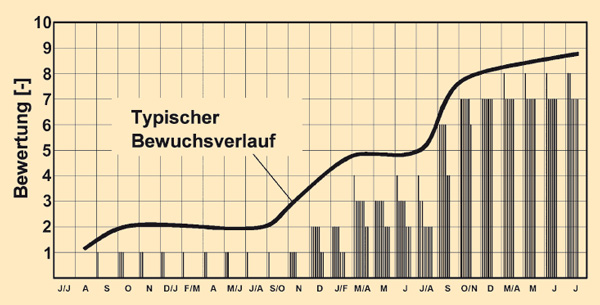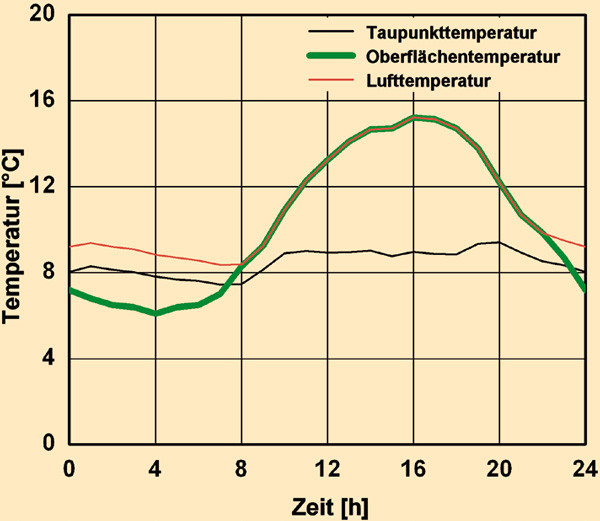


The susceptibility of exterior coatings to mold growth can currently only be assessed realistically by carrying out field studies over a period of several years. But for the developers of new coating materials, this means either an unacceptable delay or the risk of bringing insufficiently tested materials onto the market. A new artificial weathering system has been devised to help remedy this situation.
In artificial weathering processes, the conventional approach is to greatly intensify the applied boundary conditions or to drastically shorten stress cycles, or a combination of the two. But microbial mold growth tends to react to this with stress, which slows down its rate of growth. To combat this, natural boundary conditions are required. But then how can growth be accelerated?
Previous research indicates that growth primarily occurs in the fall. By simulating a sequence of mid-fall days, it should thus be possible to accelerate the growth rate by a factor of four – without applying “unnaturally” excessive boundary conditions. It is essential to include average morning dew as the primary source of moisture in this process. Therefore, the controlled weathering test facility we have developed has rear panels that can be cooled to generate dew on the samples inside. Side openings provide conditioned air, nozzles spray the samples with lime-free rain water, and two lamps built into the doors simulate daylight.
Up to 50 samples of façade coatings can be weathered in the test chamber at the same time. The samples are regularly spiked with a cocktail of typical primary colonizers. Growth is quantitatively gauged using a visual evaluation scale developed at Fraunhofer IBP that has also been used in previous field experiments.
Diagram 1 shows the progression of growth (bars) tracked in a field experiment over three years, and a typical cyclical growth pattern derived from it (solid line). Diagram 2 shows the diurnal course of the climatic cycle selected for the weathering facility with the parameters air temperature, humidity and the resulting dew point temperature, as well as the surface temperature of the test specimens.